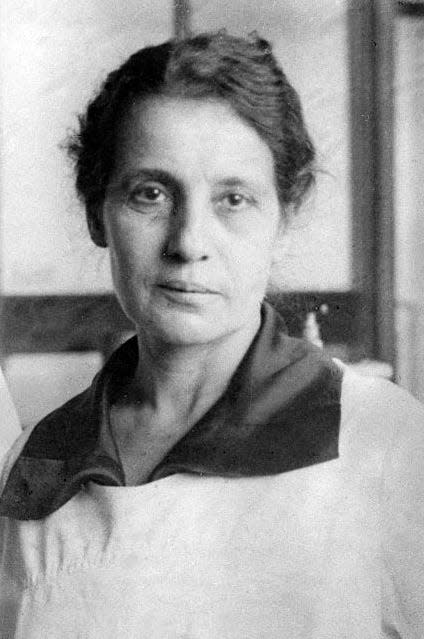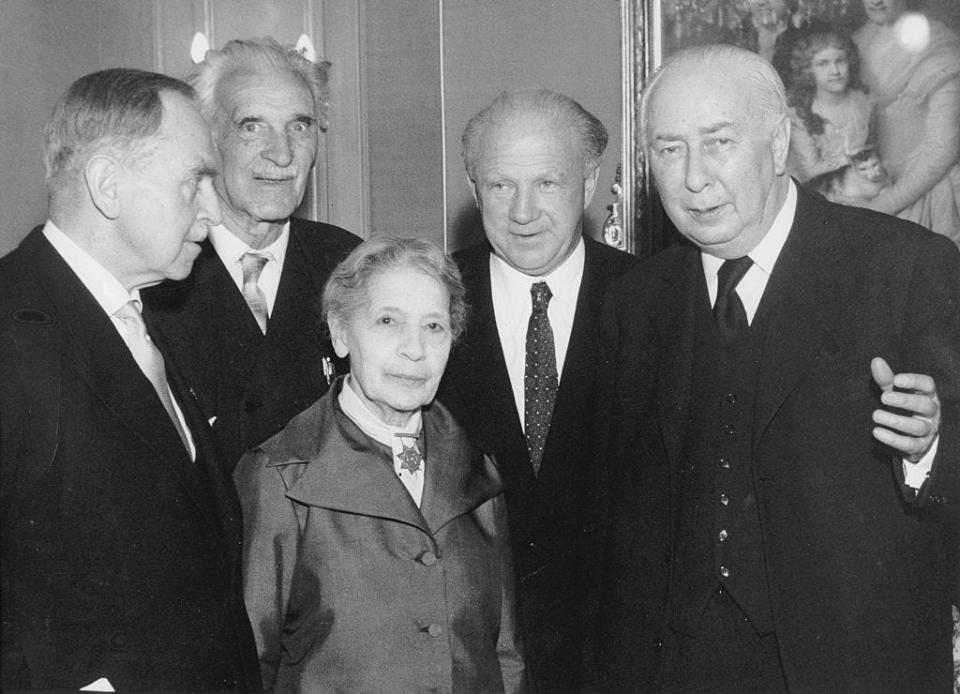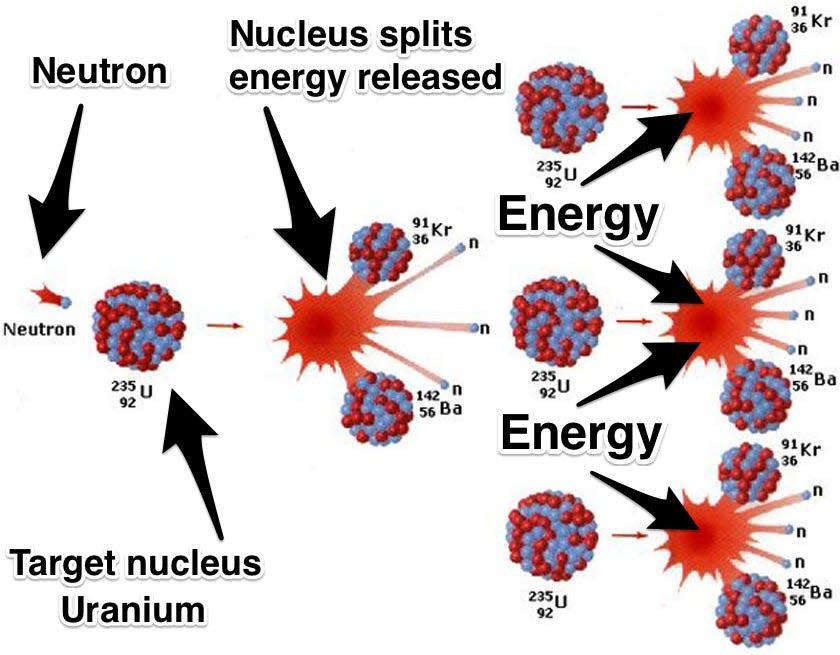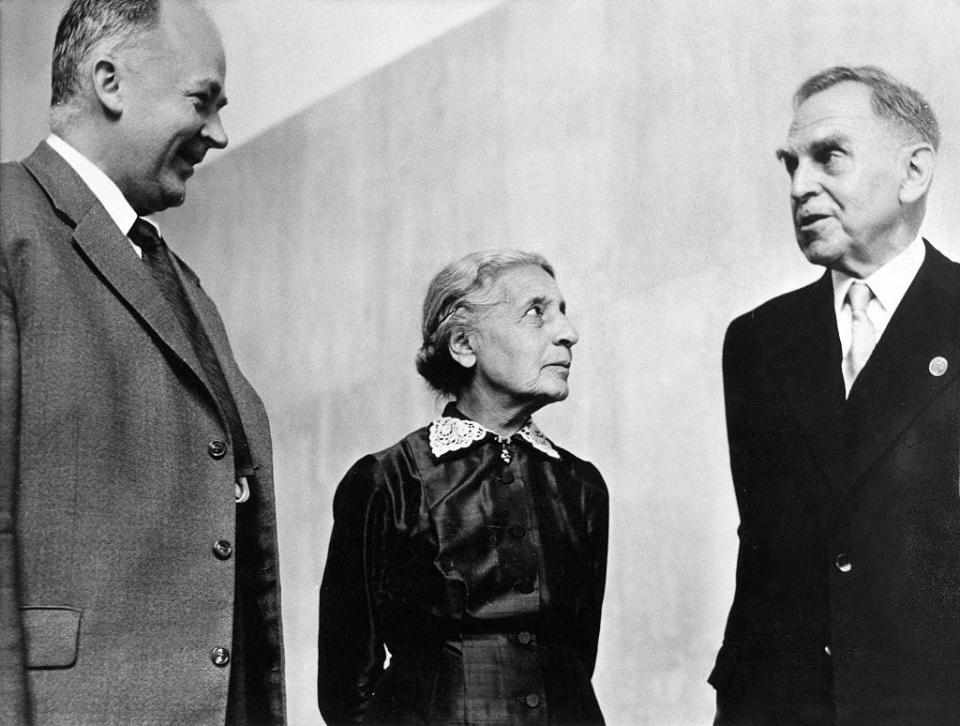-
Lise Meitner identified the process of division that her male colleagues could not resolve.
-
His closest colleague, Otto Hahn, downplayed the important role he played in the discovery.
-
Hahn won the Nobel Prize for this discovery in 1944. Meitner was nominated but did not win.
The discovery of nuclear fission was one of the great scientific milestones of the 20th century. It led to: atom bombnuclear energy and the Nobel Prize in 1944 to German chemist Otto Hahn.
But Lise Meitner, Hahn’s long-time colleague and collaborator who actually identified and scientifically explained the nuclear fission process, was nominated for an award. Nobel Prize in the same year but did not win.
“Every physicist knew this was his job, and he deserved this award,” Meitner’s biographer Marissa Moss told Business Insider. He added that he thought the reason Meitner was overlooked was due to sexism and antisemitism.
“I think it’s very easy to push a Jewish woman aside,” Moss said.


Meitner was highly respected by other physicists – Einstein called her “our Marie Curie” and compared her to the groundbreaking two-time Nobel Prize winner.
During his career, Meitner was nominated for the Nobel Prize 49 times but did not win, but the 1944 award remains the most glaring omission in his illustrious career.
Meitner had to flee Nazi Germany
Meitner, who was Jewish and born in Austria, was the first female professor of physics in Germany.
He directed the department of radiophysics at the Kaiser Wilhelm Institute in Berlin. Hahn was head of the radiochemistry department and would later become director of the institute. They have collaborated frequently over the years; this included the joint discovery of the element protactinium in the late 1910s.
In the 1930s, their work together continued with the search for transuranium elements. The idea was that bombarding uranium with neutrons could produce new, heavier elements called transuranium.


However, as Hitler came to power, Meitner’s position weakened; He lost his professorship in 1933 and was allowed to stay in Berlin only because of his Austrian citizenship. After Germany annexed Austria in 1938, Meitner fled to Sweden.
“All his Jewish colleagues left him years ago. He just held on because he had a community and could work,” Moss said.
Meitner, who was exiled in Sweden, continued his correspondence with Hahn. At Meitner’s encouragement, he and chemist Fritz Strassman continued their uranium experiments. Then, in December 1938, he received a letter from Hahn detailing a surprising experimental result.
Hahn discovered fission but wasn’t sure about it


Hahn’s letter indicated that his experiments on bombarding uranium with neutrons produced barium as a product. There was no ready explanation for this result, as barium is a much lighter element than uranium and scientists expected to produce heavier, rather than lighter, elements.
Hahn wrote to Meitner: “Perhaps you can come up with a fantastic explanation. We know that it cannot actually be separated into Ba.”
Before Meitner could respond, Hahn and Strassman published their results, but offered no explanation of what they thought had happened, and their paper made no mention of Meitner’s role in the experiments.
“You have to understand that he wasn’t really talking about Meitner because he couldn’t be seen to be working with a Jew,” Moss said. “She was already writing letters to him complaining that working with him had damaged her reputation at the institute. She was sitting at smaller tables at big institute dinners, she wasn’t getting the accolades she deserved for working with a Jew, and that wasn’t a good thing.”


Meitner continued to ponder Hahn’s findings, and while discussing it with his nephew, the physicist Otto Frisch, came to the idea that if an atomic nucleus was imagined as a liquid drop, perhaps energetic neutrons could actually split the uranium nucleus into different pieces, producing lighter elements. — the process of nuclear fission.
Meitner was used Einstein’s famous equation E=mc^2 To explain the reaction mathematically: The atoms produced after the fission of uranium were slightly lighter than the original uranium atoms, and the missing mass was converted into pure energy.
In February 1939, Meitner and Frisch published their paper on fission in the scientific journal Nature, just a month after Hahn’s paper.
They overlooked the Nobel Prize
Hahn was awarded the 1944 Nobel Prize in Chemistry for his discovery of nuclear fission. Meitner was nominated in the physics category but did not win, despite his important role in confirming and explaining the discovery. Strassman and Frisch were also overlooked for the Nobel Prize.
An analysis of the Nobel committee’s records published in Physics Today concluded that one of the reasons Meitner was overlooked was “a general failure of evaluation committees to appreciate the extent to which the German persecution of Jews distorted the published scientific record.”
Since 1901, more than 621 Nobel Prizes have been awarded in the fields of physics, chemistry, medicine, literature, peace and economic sciences. Only 65 of these 621 awards were given to women; about 10%.
More than twenty years later, in 1966, Meitner, Strassmann and Hahn were awarded the Enrico Fermi Prize for their discoveries.
However, Hahn had downplayed Meitner’s role for many years. The apparatus used to detect fission was referred to as “mitarbeiterin” in the German press and in a museum exhibit, “a word that could be interpreted as assistant,” Moss said.
Hahn did nothing to dispel the idea that Meitner played a minor role in the discovery.
“That hurt him a lot,” Moss said.
Read the original article on Business Insider